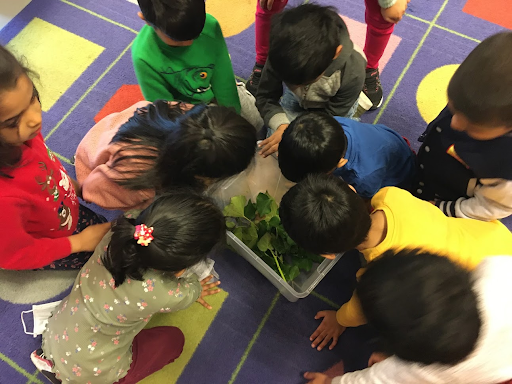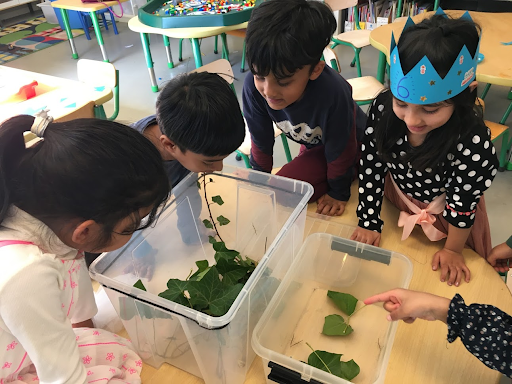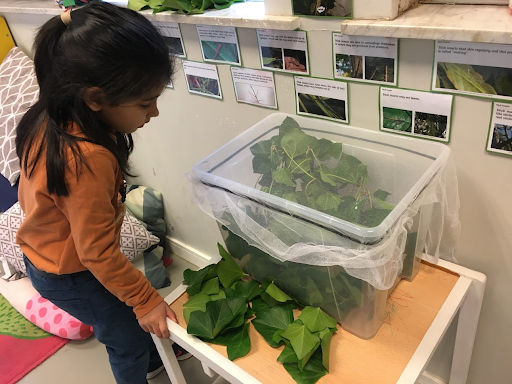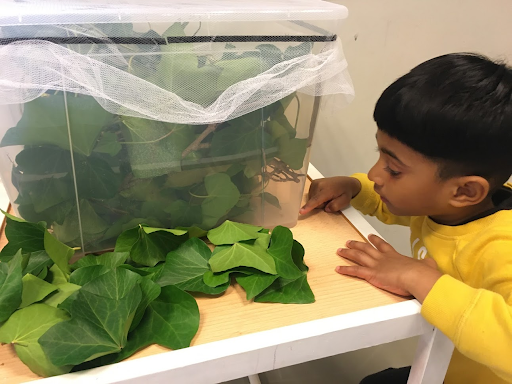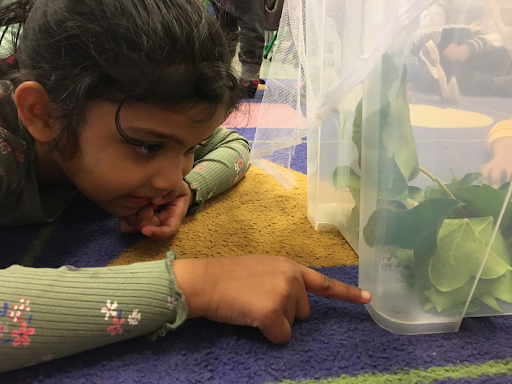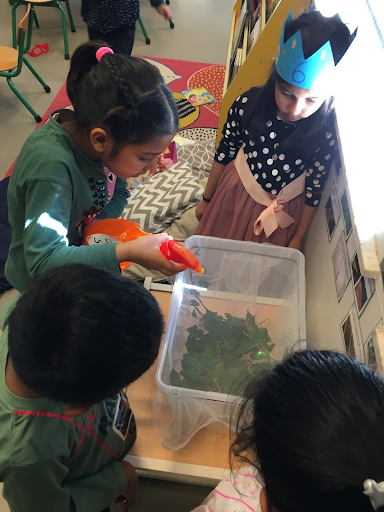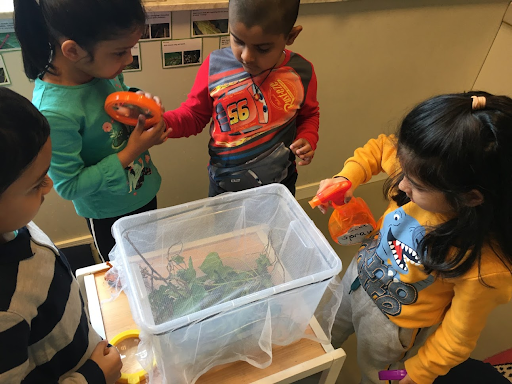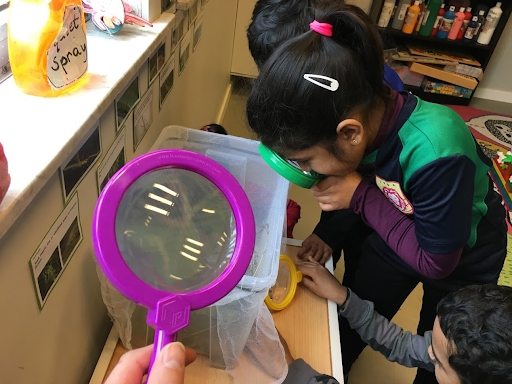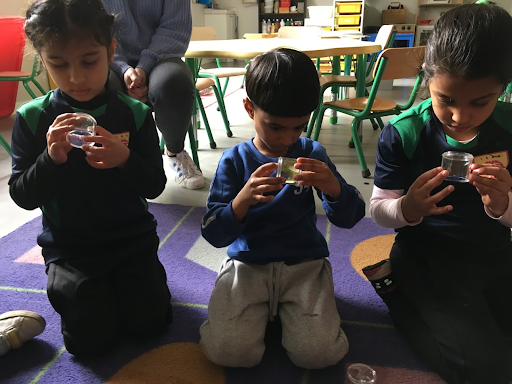Early Years Foundation is currently learning everything about minibeasts. We share our space with thousands and thousands of little visitors; minibeasts that live in the soil, under stones, amongst the plants and grass, in the trees and even in our homes. Minibeasts come in lots of different shapes and sizes, from tiny ants and long wriggly worms to beautiful butterflies with brightly-coloured wings. We have been exploring minibeasts in our local area and found out more about what they look like, how they live and how they move about.
We even have pet stick insects living in our classroom. We did some research on how to take care of them and learned lots of new facts about stick insects. We regularly provide them with fresh leaves and spray water over the box in which they live to help them with the process of shedding their skin. We were able to observe one of them shed his skin when we were cleaning their box. We have seen them grow from nymphs to adults now and can’t wait for them to lay some eggs.
Our class really enjoyed spotting insects with magnifying glasses around the school area during this IEYC unit. Sometimes you don’t see any at first, but if you take the time to observe more closely, you can often unexpectedly spot a minibeast somewhere around you.
Mr. Nick


